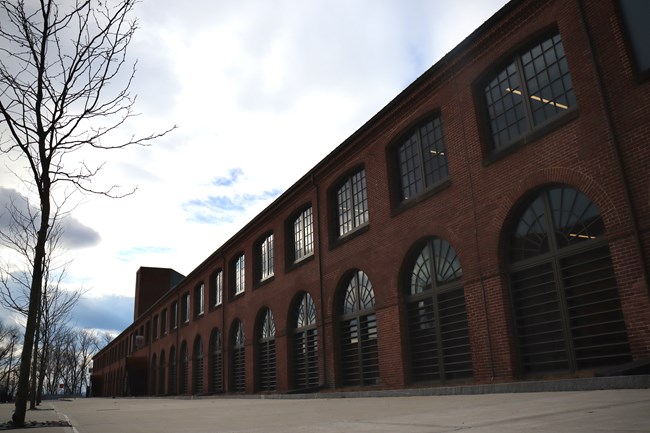
NPS Photo/Dani Beekman Tucked away on the Armory grounds, Building 19 was constructed, beginning under Major James W. Ripley, between 1847-1864. With a gabled slate roof, segmental arched openings, and louver blinds, the building is considered one of the best surviving examples of the American Cavalry Caserne Style. Building 19 had multiple purposes including stabling horses and housing an x-ray lab and cryptography unit for sending and receiving coded messages, but its main purpose was storage of lumber. 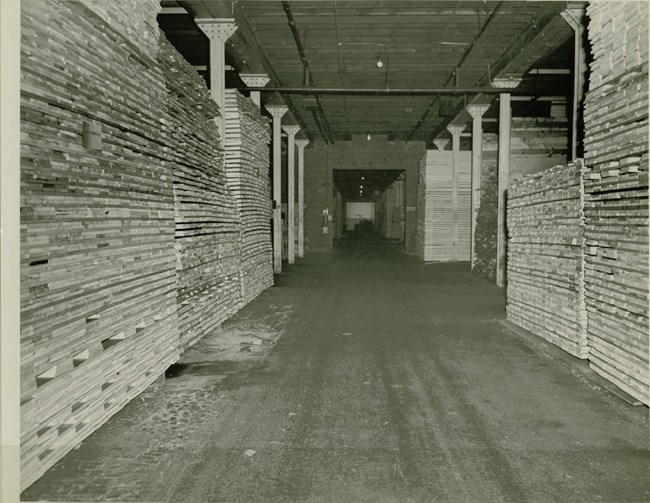
NPS Photo/Springfield Armory NHS Archives Prior to the construction of Building 19, gun stocks, box boards, and lumber were stored in two sheds located on the South edge of the Parade Green and in 1830 the sheds were moved to the East Square (now Federal Square). With the appointment of Major Ripley, the wooden sheds were replaced with a brick permanent structure. Built on the site of what was previously worker housing consisting of barracks and detached homes, Building 19 stands at an impressive 764 feet, but it wasn’t initially that long. Built in four separate phases, the Long Storehouse I, Long Storehouse II, Stables, and West Addition were added as the need for storage increased. After each addition the name of the building changed to represent the new purpose and design. Names included “Brick Timber Store House,” “New Store House,” and “Gun Stock House.” 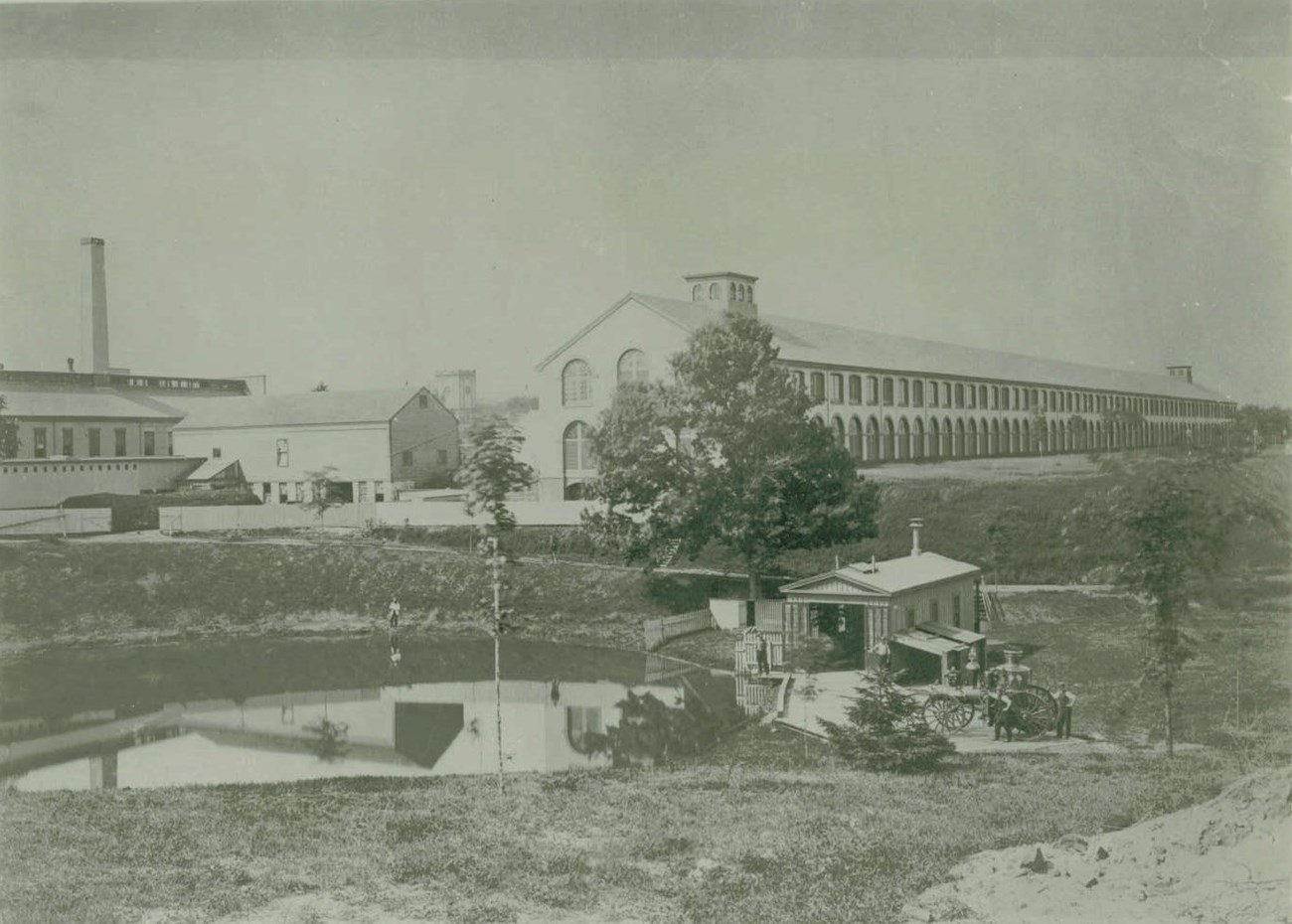
NPS Photo/Springfield Armory NHS Archives
In August 1846 Major Ripley requested $2,000 and construction started in September. Funds were expedited due to the start of the Mexican American War (1846-1848), as the Armory experienced increased munition demands. By the end of June 1847 Long Storehouse I was completed. As the Mexican-American War continued, Ripley requested additional funds in May 1847 for the creation of an additional storeroom. The funds were appropriated in August 1848 and Long Storehouse II was nearly complete by August 1849. Long Storehouse I and II were built in a Greek Revival style with two stories and a garret (loft) which included louver blinds (angled slats), that could be opened to allow in air and light while preventing direct sunlight and rain from entering. Using natural light was a necessary feature due to the amount of flammable material stored here. By 1854 the building was painted rosy beige with a dark brown trim. 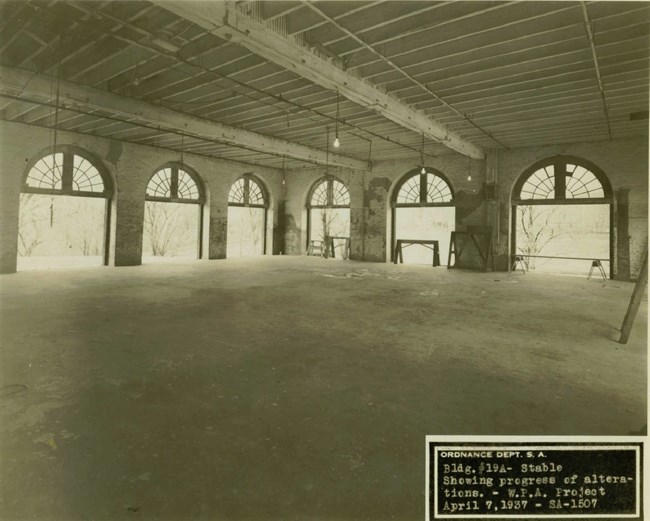
NPS Photo/Springfield Armory NHS Archives A year later, in August 1862, the Secretary of State approved a request for additional storage in two days. The West Addition matched the design of previous sections and Italianate ventilator towers on the West Addition and Stable were added. By early winter of 1863 construction was completed bringing Building 19 to its current length. 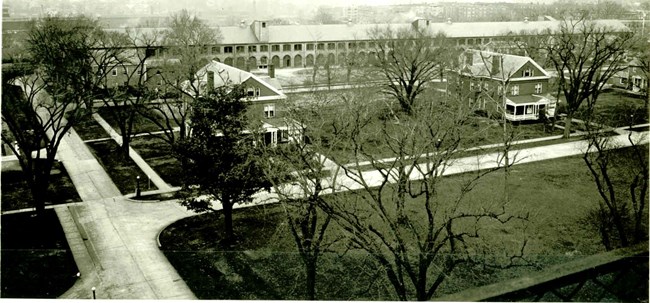
NPS Photo/Springfield Armory NHS Archives 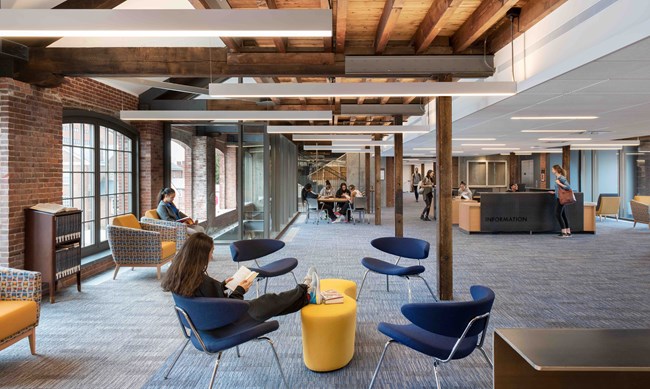
Photo Credit: Springfield Technical Community College Today while the building serves a different purpose, one can still hear the individuals milling about and experience the beauty of a building that was essential to the operation of Springfield Armory. |
Last updated: July 20, 2021
